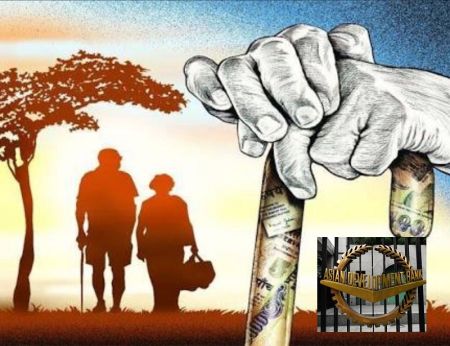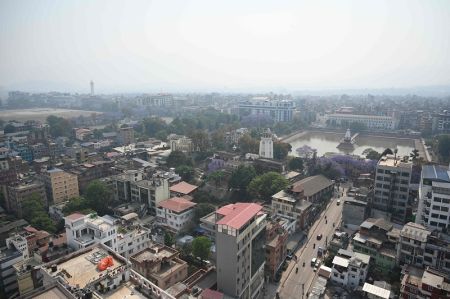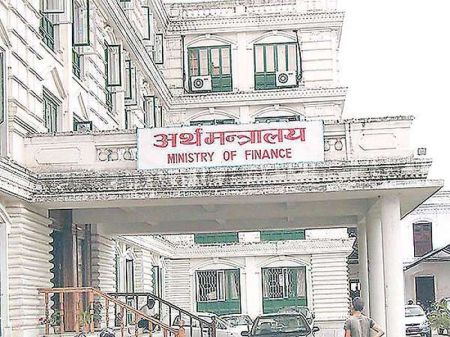By Shirin Abbas
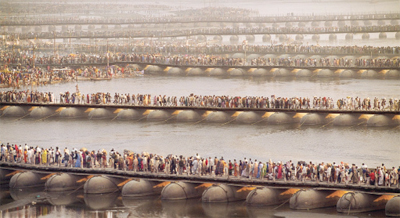
For those with a yen for all things spuiritual, the Kumbh stalls have something for everyone--- from Tulsi beads to Rudraksh malas, janeus—sacred threads –all.
Its business unusual at the Kumbh and for all vendors—great or small— the sheer volumes of the multitudes drawn to the tented city during the 55 day Mahakumbh period translates into phenomenal profits.
Going Vegan and Lovin’ It
Like all fairs the way to the pilgrim’s heart here too is through his stomach. Despite the strictly vegan clause, there’s no dearth of variety. From regular Indian menus comprising dal, sabzi, piping hot chappatis straight from the tandoor and steaming spicy veggies, there’s regional cuisine galore to take your pick from. Rajsthani, Gujarati, South Indian, Punjabi, and suchlike delicacies along with yes—Pizzas, Burgers and the ubiquitous Chinese—you will find it all at the food stalls in the Kumbh area. But that is not all. For those with the “munchies”—hunger pangs on the go— the Kumbh is dotted with street food that india loves—Spicy chaat to tempt the palate. Puchkas, padakas, Golgappas or panipuri—call them what you may, these poisonously spicy great balls of fire are a favouriteof all at a throwaway price. Along with these aloo chaat, matar and dahi badas are quick draws too.
For the fruitarians the Kumbh is peppered with fruit stalls serving up bananas, papayas, oranges and lusccious green grapes along with some rare delicacies like kand mool—the woody sweet tuber that ram is supposed to have lived off during his 14 years penance in the jungles. And yes—the Cola Giants and the fizz and soda companies are not exactly invisible here. Vying for attention against the lowly nimboo pani and Daab—coconut water—they give variety as thirst quenchers.
Kitsch for Body & Soul
For those with a yen for all things spuiritual, the Kumbh stalls have something for everyone-- from Tulsi beads to Rudraksh malas, janeus— sacred threads –all find takers at the world’s largest fair. And the ladies need not complain either. Symbols of marital bliss and vibrant conjugal partnership are here as takeaways too—and doting husbands couldn’t possibly deny their partners a symbolic gift from these- -vermillion—orange, bright blood red or deep maroon—sold loose or in ornate laquered boxed are there for the taking. Bindis and bangles of all hues and colours complete the ensemble. For the more adventurous—plastic pins and baubles, jewellery and hair accessories vie for pride of place on these mobile stalls, attracting the pretty young things who loathe to leave without indulging in some frivolous shopping.
Herbal Viagras and Cure It Alls
What’s a fair without quacks and medicine men? The Kumbh is no exception. Cozily settled in their little quarters sprinkled across the Mela area you will find them peddling their sure-shot ware that promise and end to all that ails the body and mind in the nether regions. From herbal viagras to arousing gels, virility enhancers and herbal panacea with the promise of “lasting” power—they will provide any and everything with the flick of a hand. Some dismiss all these as hogwash, others swear by their aphrodisiac powers--- faith lies in the peddler’s persuasive powers and the buyer’s belief in their remedial qualities.
Spiritual Souveneirs
For the touristy spiritual seeker, what better to carry back than a kitschy reminder of the Kumbh 2013? Thus spiritual parphernalia—stickers, keychains, calendars and other bric a brac keep them amused hoping to satiate the tourist in the pilgrim. heads of various akharas have their own memorabilia to distribute among their followers. Plastic buntings, banners all find takers in this spiritual melee where everyone seeks a symbolic solace in the tokens they carry back as reminders of their spiritual cleansing.
Management Mantras: Lessons from the Kumbh
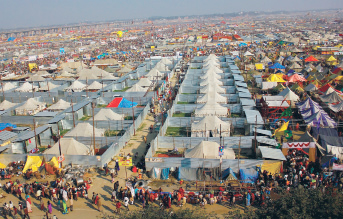
For researchers at Harvard School of Public Health the Kumbh Mela 2013 is providing an unprecedented opportunity to gather the largest data set ever about a transient population. Amidst the growing throbbing crowds of pilgrims at this year’s Mahakumbh are also a team of HSPH faculty members and students, coordinated and funded by the School’s FXB Center for Health and Human Rights, to document the outbreak and patterns of disease, the systems in place for water distribution and sanitation, and the methods for containing stampedes and mass casualties at the Kumbh, with a goal of strengthening understanding about public health concerns during mass gatherings and migrations. And if their reactions are anything to go by, they are impressed!
Directed by Jennifer Leaning, Francois-Xavier Bagnoud Professor of the Practice of Health and Human Rights and Director of the FXB Center, the team is led by Satchit Balsari, a fellow at the FXB Center and Harvard Humanitarian Initiative (HHI) and Gregg Greenough, director of research at HHI and an assistant professor at HSPH. The HSPH contingent is working with teams from Harvard’s Faculty of Arts and Sciences, Harvard Graduate School of Design, and Harvard Business School. The researchers are studying religious expression, temporary infrastructure, and the makeshift economy at the Kumbh, among other projects.
Already, the team has charted information from more than 16,000 Kumbh clinic patients for a health study with significant impact. The first reaction of the team was the amazement at the degree of organization. “The electrical grid, wide boulevards, street lights, water supply, sanitation, crowd control, security, sector hospitals and a central referral hospital would be impressive anywhere— but the fact that this is all temporary and will be gone by the end of March—makes it an absolutely astounding organizational feat,” said the doctors.
The team’s goal was to prove that it is not difficult to gather data in resource-scarce settings. Using a handful of I-pads, the doctors have so far mapped 15,000 patients who visited the various hospitals. “If we can do it, the government can certainly do it. Our surveillance tool should help with early detection of impending epidemics in the future,” said Dr Dhruv Kazi, a Vile Parle-born cardiologist from San Francisco General Hospital.
The team plans to incorporate this year’s stampedethat took 37 lives in their findings. In a blog post shortly after the incident, Balsari wrote, “The Kumbh Mela sees more resources, more planning, more implementation and more goodwill than any other large public project in India. It is tempting, very tempting, to therefore attribute the footbridge stampede to a freak but unfortunate accident that may scar the 2013 Mela forever. But to do so would be erroneous, for we believe that the footbridge accident is a symptom of a more pervasive malaise in the planning process, not unique to the Kumbh.”
“The Kumbh Mela festival takes place on a remarkable human scale. We expect that our findings will prove significant to the organizers of the Kumbh and more generally, will strengthen our understanding of the public health concerns of mass gatherings,” Leaning said.
Follow the team on Twitter at #HarvardKumbh






